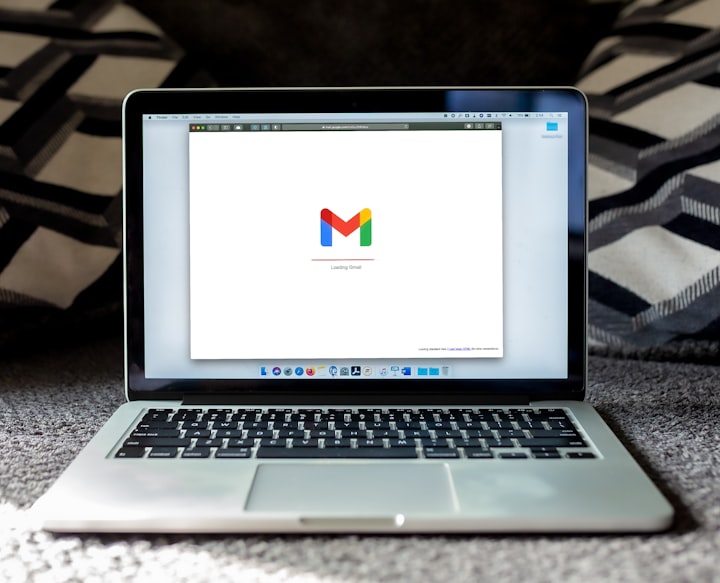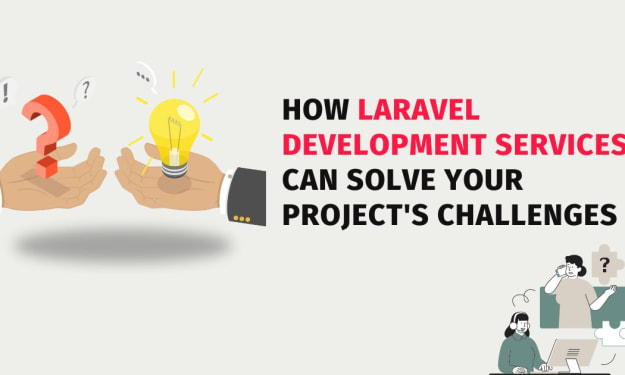
What Is Email and How Do I Use It?
If you've been living under a rock for the past decade, email, or electronic mail, has surpassed all other forms of communication in modern society. According to recent figures, the number of daily email messages is approaching 60 billion!
Email is widely used. It allows friends and family to communicate over long distances. When it's more convenient than standing up and walking over or picking up the phone, coworkers use it. Email is used to check who you are (on a variety of websites), and it is ubiquitous.
Given the widespread use of email, we can move on to the next section:
why email marketing?
Why Do You Use Email Marketing?
I was able to come up with five big reasons why an organization or agency should do email marketing when planning for this post. These six reasons disregard the statistics of email marketing - low cost, high effectiveness, and so on - and instead focus on the benefits to your company once you've implemented:
(1) The Incredible Return On Your Investment
(2) Discounts and Sales
(3) Breaking News
(4)Questionnaires
(5)In the Foreground! (of your competitors, customers, and suppliers)
Return on Investment: According to the Direct Marketing Association, email marketing provided a return on investment of $51.58 for every dollar spent in 2006. The predicted figure for 2007 is $48.56, with $45.65 predicted for 2008. Email marketing to internal lists outperforms all other forms of direct marketing, such as print ads, brochures, and sales pamphlets. Email marketing is not only cheap to manufacture and reproduce, but it's also very successful.
Send updates - there's always something going on at your place of operation. You have improvements, you have updates, and you have details that your customers will enjoy getting and learning. Email marketing helps you to disseminate this knowledge quickly and effectively. Compose one email about a recent change at your company, target an appropriate group of clients (more on targeting to come), and thousands of people you do business with every day are immediately aware of the situation. Sending information, which is at the heart of email, is possibly one of the most important (and straightforward) reasons to engage in email marketing.
Sales & Discounts - Are you doing a special sale or giving a discount to long-term customers? If you let your customers know, you might be bringing in several times the amount of business you are currently bringing in. It is said that selling to an established customer is the most effective. Email marketing is a great way to communicate offers, promotions, and discounts to your community of prospective and current customers in an effective (but personal) manner.
News - Spread the word about your positive news! People in business want to work for businesses that are rising and prospering. It rubs off on you! Colin Quinn and I met a few years ago in the Newark airport, and I credit that awkward meeting with my current success.
Only kidding, but let people know if you've been listed in the paper or if you've had a ribbon-cutting. Continue to succeed by broadcasting the good news, achieving fame - even local celebrity.
Surveys - Anyone you deal with, including your clients, suppliers, and staff, has a say. You will gain insight into all facets of your company and associates with a short email newsletter and a survey.
Keeping Up with the Joneses - I saved the best for last. Staying in Front! is the most important thing I'd like to communicate from my experience setting up and designing email marketing.
People have a finite amount of memory. If you provide excellent service, someone would most likely inform a friend or two about it, or refer a business associate to you. However, as time passes and they get closer to the service date, they can forget about you.
The detailing job you did on your client's car was great, but as time passes and circumstances in your client's life occur that require a referral (for example, a friend of your client buys a used car), the transaction becomes so distant that they forget you are available with a service that would help them.
This time barrier is obliterated by email marketing. Clients you served years ago, when they were kept up to date on your latest information, sales, news, surveys, and so on, now have an inbox full of you and can't forget about you. Even if they don't read every email, small reminders are a great way to keep your company in front of their minds. Email marketing helps you to keep in touch with all of those customers and suppliers you worked so hard to acquire, but aren't currently working with or assisting.
Furthermore, an email newsletter allows you to stay ahead of the competition. I've recently spoken with a number of businesses who are dissatisfied with their suppliers or other outsourced services, but they can't even recall the company's name! People are preoccupied, and they will forget. However, if your client is attacked by a rival, an email newsletter - one that has kept your business in your client's mind - is a great tool to hold your client.
Getting Email Addresses is a process that involves collecting email addresses from a variety of sources
There are many methods for obtaining the email addresses of people to whom you can deliver your email newsletter. It doesn't matter how big it is. You can begin with small steps. We only had about 60 or so addresses, to begin with (friends, family, colleagues, clients, etc.). Your to-do list will expand over time. However, the only way to get emails for free is to use the following methods:
Established Associates - Ask your current clients for their email addresses. Start there if you already have a spreadsheet with all of your clients and suppliers, or if you're using more sophisticated CRM tools. Make a list of people you interact with on a daily basis.
If you attend a networking function, ask everyone you meet if they will be interested in getting your email newsletters. When you start focusing on your list, it will almost always expand extremely quickly. The majority of these ideas revolve around activities and individuals you meet on a daily basis.
Offer a free gift, guide, or consultation session to anyone who agrees to be added to your mailing list at a trade show. You've come to the trade show to network and sell your goods or services; obtaining a real eligible email address will enable you to do so for the rest of your life.
Targeting - Various emails will appeal to different groups of people. A message intended for your vendors may not extend to your customers; in reality, it may be critical that you do not send that message because it may send mixed signals and tarnish relationships. When a result, as you begin to compile your list, make sure to segment it. This method can differ based on who you work with; for example, you will have clients/customers, suppliers, leads, friends and family, and so on. The more targeted your list becomes as your list expands and you improve your email marketing skills, the better.
DO NOT USE PAID LISTS - Paid lists or collecting randomly found email addresses from websites all over the internet, though legal, would only lead to trouble in the most fortunate or extreme cases. Simply put, do not solicit someone you haven't met in person or invited to join your newsletter - email marketing when done correctly, will take more time, but it will be more successful, have a higher return, and keep you out of trouble in the long run.
If you are using a paid email newsletter service, marketing to people who have not asked or given you permission will get your account banned from various services, obliterating any hard work you put into the design or production of your targeted lists.
Putting Together Your Email Newsletter
You're all set to go, and you've agreed to start an email newsletter. What do you do now that you've spent some time collecting addresses?
Create your email with this service. This can be accomplished in a variety of ways. If you are on a tight budget or are just starting out, you can easily use your own emails, such as Outlook, Hotmail, or yahoo. Copy and paste your contacts' email addresses, then compose a brief message and send it.
Users of Outlook can also perform a mail merge, and if your email list was created using an excel document, you can merge relevant fields for a more personalized address.
If you're looking for something more sophisticated, such as a newsletter with your logo, you can experiment with the resources provided by the above services or opt for a full-fledged email newsletter service.
Constant Contact is something I strongly believe in. We've been using the service for a long time. It's simple to use and customize, and you just pay per contact, not per email sent. That might not be feasible for all businesses, but if you have a 5000+ contact list and send an email twice a week, the amount of emails sent easily adds up.
Etiquette - Your email should be courteous but unpretentious. Speak to the audience in the second person; it takes a little longer, but it has a huge impact. Finally, you are the right person to know your target audience; write your email with them in mind. What works for a wacky online t-shirt shop may not work for a financial advisor.
Subject Line - Make sure your subject line is relevant to the body of your text, but don't be afraid to be creative. Experiment with various ways of expressing what you've made. People must recognize your name, read your subject line, and want to press.
Design - Keep design in mind whether you use one of the above email newsletter services or just your regular email. You may not need a logo, fancy colors, or cool effects, but you can use bold text, bullet points, and colors to draw your audience's attention. And keep it as straightforward as possible. Inboxes are becoming increasingly cluttered, and people have little or no time to read them. Guide them to the most critical points as soon as possible.
Make your content short, just like your style. A paragraph usually suffices, but a few sentences are preferable. In our usability and optimization experiments with clients, we've found that emails that are short and easy work the best. A call to action should also be included in your email. Offer your readers the next move, whether it's anything as easy as a big button asking them to donate or something that's included in the body of the text. Do you want them to press, call, or do something else? Whatever you want them to do, make sure they can do it quickly and easily.
Email Sending
There are two main points to note when sending emails: send at the right time and send to the right audience.
We talked about breaking up the list into various classes or lists. When you receive the emails, try to separate them as much as possible. As a result, when sending emails, you will be able to send specific, tailored messages to those specific groups. We've gone so far as to form groups for specific events we've attended. That way, we can give a message to just the people we've met - or maybe a special offer.
Email newsletters are no exception to the rule that timing is everything. A message sent at 5:30 p.m. on a Friday is unlikely to be as successful as one sent at 2 p.m. on a Wednesday. Consider your audience's preferences in the same way you consider your material.
Do they check their email first thing in the morning at 5 a.m.? Do they have hectic workdays with a lot of emails? Overall, we've discovered that emails sent in the middle of the week have the best chance of being mixed up with the end-of-week chaos or the Monday overflow. The time of day is also important.
While all audiences are different, we've noticed that if you're looking for professionals, the afternoon is ideal. The majority of people have already sorted through their inbox chaos, so seeing your email show up in the lower right-hand corner of their computer is a welcome distraction.
Keeping Track of Your Emails
Depending on the email service you use, tracking can be difficult or easy. Another reason we like email newsletter services is that they allow fast, if not creepy, tracking. You can see who clicked on what and when via email-over-email. When you send out more emails, you can find that certain times work well for you, or that certain terms in your subject line result in higher open rates.
Start experimenting and refining your email tracking as you go. Slow tweaks over time will result in a widely opened email that almost everyone reads.
Laws and regulations
I wanted to put in a little bit about the legalities surrounding email after my recent visit to FGCU's Entrepreneurs Law School. In general, you can send an email to anyone, at any address, regardless of where or how you obtained that address, as long as the following basic requirements are met:
Use a subject line that isn't ambiguous.
Enable people to unsubscribe from your mailing list.
Include details about your business (name, address, phone number, etc.).
That was a lot of information. However, I am confident that once you get started, you will be ecstatic with the results.
About the Creator
belle
I am composing articles on Advertising & Marketing, Social Media, Small businesses, event planning, and services, etc. I write articles on anything related to weight loss, relationships, and advertising, and business growth.






Comments
There are no comments for this story
Be the first to respond and start the conversation.